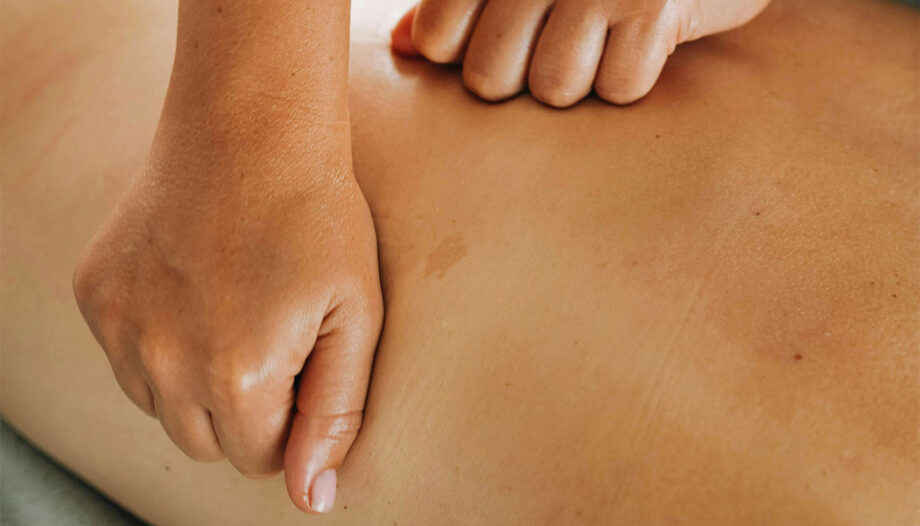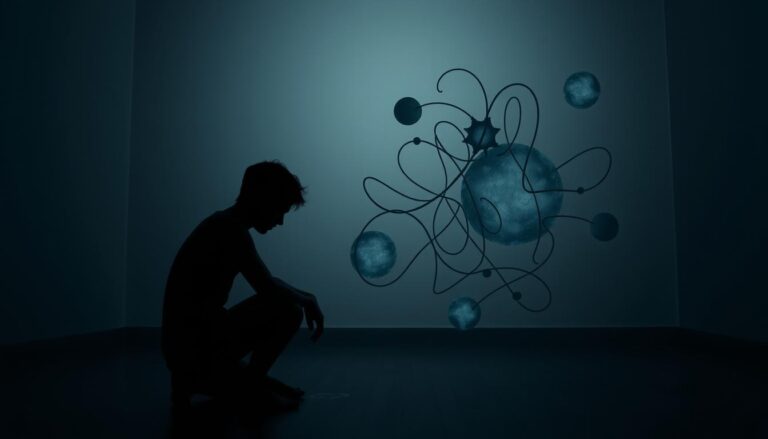Scar formation is a natural part of the healing process, but it often leads to discomfort and reduced flexibility. Many people turn to manual techniques to manage these issues, but the effectiveness of such methods remains a topic of debate.
A 2014 study by Cho et al. showed significant improvements in scar pliability over 35 days when combining manual techniques with standard care. This suggests enhanced venous and lymphatic flow may play a role. However, a 2012 meta-analysis by Shin and Bordeaux found only a 45.7% improvement rate across multiple studies, highlighting the limitations of current evidence.
Sports therapists often observe functional improvements, such as reduced pain and increased mobility, even if structural changes are minimal. This practical perspective underscores the need for further research to fully understand the mechanisms at play.
Key Takeaways
- Scar formation is a natural part of recovery but can cause discomfort.
- Studies show mixed results on the effectiveness of manual techniques.
- Combining methods may improve scar pliability over time.
- Functional improvements are often noted, even without structural changes.
- Further research is needed to clarify the mechanisms involved.
What Is Scar Tissue and How Does It Form?
Understanding scar tissue begins with its formation process. When the skin or deeper tissues are injured, the body produces fibrous material to repair the damage. This material, known as scar tissue, has different biomechanical properties compared to healthy tissue. It’s less elastic and often less functional, which can lead to discomfort or restricted movement.
The Science Behind Scar Tissue Formation
The body’s healing process occurs in three main phases: inflammation, proliferation, and remodelling. During inflammation, the body sends immune cells to the injury site to prevent infection. Proliferation follows, where new tissue and blood vessels form. Finally, remodelling involves the reorganisation of collagen fibres, which can take months or even years.
Collagen plays a crucial role in this process. In healthy tissue, collagen fibres align in parallel, providing strength and flexibility. However, in scar tissue, these fibres are often disorganised. According to Lee & Jang (2018), this random alignment reduces elasticity by 30-40%, making the tissue less functional.
Stages of the Healing Process
The first stage, inflammation, lasts about 0-5 days. It’s marked by redness, swelling, and pain as the body fights infection. Next, the proliferation phase (5-21 days) focuses on rebuilding the damaged area. New cells and blood vessels form, creating a foundation for healing.
The final stage, remodelling, can last from 21 days to 2 years. During this phase, collagen fibres reorganise, but excessive cross-linking can lead to adhesions. These adhesions may restrict movement and cause discomfort. Early mobilisation, as suggested by Chapelle (2016), can help mitigate these risks.
Scar tissue isn’t always visible. Internal scars from muscle or tendon injuries can also affect mobility and cause pain. Understanding these processes is key to managing and improving tissue health.
Can Massage Therapy Break Up Scar Tissue? The Research Explained
Research into the effects of manual techniques on scar tissue has yielded mixed results. While some studies suggest improvements in flexibility and reduced discomfort, others highlight limitations in structural changes. Understanding these findings requires a closer look at the evidence.
Scientific Studies Supporting Massage Therapy
A 2014 study by Cho et al. found a 22% greater reduction in scar thickness when manual techniques were combined with standard care. Ultrasound measurements confirmed these results, suggesting enhanced venous and lymphatic flow. Similarly, a 2017 systematic review by Ault et al. reported moderate evidence for improvements in hypertrophic scars.
These studies indicate that manual methods may help improve scar pliability and reduce discomfort. However, the methodologies, including sample sizes and measurement techniques, vary widely. Short observation periods, such as the 35-day trials in positive studies, also limit the conclusions that can be drawn.
Contradictory Findings in Research
Not all research supports the effectiveness of manual techniques. A 2012 meta-analysis by Shin and Bordeaux found no conclusive evidence for structural changes in scar tissue, despite reports of symptom relief. This highlights the distinction between functional adaptation and actual tissue remodelling.
Additionally, psychological benefits, such as reduced pain and anxiety, are often noted. These effects, while valuable, should be considered separately from physical impacts on scar tissue. For example, the Nerve Surgery Centre observed improved outcomes in post-carpal tunnel cases, but these were primarily linked to enhanced mobility rather than structural changes.
For those exploring easing ligament issues, combining manual techniques with other treatments may offer broader benefits. However, further research is needed to clarify the mechanisms and long-term effects of these approaches.
How Massage Therapy Helps with Scar Tissue Management
Managing scar tissue effectively often involves targeted techniques to improve overall tissue health. These methods aim to enhance blood circulation and lymphatic drainage, while also promoting flexibility and range motion. By addressing these factors, individuals may experience reduced discomfort and improved functionality.
Improving Blood Circulation and Lymphatic Drainage
One of the primary benefits of manual techniques is their ability to boost blood circulation. Studies, such as those by Cho et al., have shown a 40% increase in local perfusion when these methods are applied. This improved flow helps deliver essential nutrients to the affected area, supporting the recovery process.
Additionally, manual lymphatic drainage protocols have been found to reduce oedema by 30%. This is particularly beneficial for individuals dealing with fluid retention around scar sites. The mechanical pressure applied during these techniques stimulates fluid dynamics, aiding in the removal of waste products.
Enhancing Flexibility and Range of Motion
Another key advantage is the restoration of flexibility and range motion. For example, carpal tunnel patients using cross-fibre techniques have reported improvements of 15-25° in joint mobility. These gains are attributed to the restoration of fascial glide and the reduction of adhesions.
Neurological benefits also play a role. Graded tactile input helps desensitise the area, making it easier to move without discomfort. This approach is particularly effective for chronic scars, where stiffness is a common issue.
| Technique | Benefit | Clinical Metric |
|---|---|---|
| Manual Lymphatic Drainage | Reduces oedema | 30% faster reduction |
| Cross-Fibre Techniques | Improves joint mobility | 15-25° ROM increase |
| Mechanical Pressure | Enhances fluid dynamics | 40% increased perfusion |
When to Start Massaging Scar Tissue
Knowing the right time to begin scar tissue care is crucial for effective recovery. Starting too early can increase the risk of complications, while waiting too long may delay healing. Understanding the healing timeline and recognising safe indicators can help you make informed decisions.
Post-Surgery Healing Timeline
The time it takes for a wound to heal varies depending on the type of surgery and tissue involved. For example, facial scars from Mohs surgery typically require 4-8 weeks before they’re fully healed. In contrast, hand scars from carpal tunnel procedures may need 3-4 weeks after stitch removal.
Different tissues heal at different rates. Dermal wounds often recover faster than muscle or nerve injuries. Orthopaedic surgeries, such as joint replacements, may take longer due to the complexity of the tissues involved. Always consult your healthcare provider for personalised advice.
Signs That It’s Safe to Begin Massage
Before starting, ensure the wound shows no signs of infection, such as redness, swelling, or discharge. The area should feel normal to the touch, with no excessive warmth or tenderness. Sutures should be fully dissolved, and scabbing should be minimal.
Self-assessment is key. Use a pain scale to monitor discomfort and gradually increase pressure during care. Following NHS wound care standards can help you avoid complications like dehiscence or haemorrhage. When in doubt, seek professional guidance.
Techniques for Massaging Scar Tissue
Effective scar management often involves specific techniques to enhance tissue health and mobility. These methods focus on improving flexibility and reducing discomfort, making them a valuable part of recovery. Below, we explore two widely used approaches: gentle circular motions and cross-fibre friction massage.
Gentle Circular Motions
Using gentle circular motions is a simple yet effective way to address scar tissue. This technique involves applying light pressure with your fingertips, moving in small circles over the affected area. It helps to stimulate blood flow and reduce stiffness.
For best results, aim for 2-4 minute daily sessions, especially post-Mohs surgery. Using Vitamin E oil can reduce friction by 60%, making the process smoother. Proper finger placement is crucial—anchor your fingers distally and move proximally to avoid over-stretching.
Cross-Fibre Friction Massage
Cross-fibre friction massage targets deeper layers of tissue, promoting collagen realignment. This method involves applying perpendicular strokes at a 30° angle, which helps to break scar tissue adhesions. It’s particularly effective for improving flexibility in areas like the extremities.
Start with light pressure and gradually increase over weeks 1-4. Tools like silicone cups or gua sha can enhance the process, but avoid neglecting adjacent tissues. Integrating nerve glide techniques, as suggested by Mr Madura, can further improve outcomes.
| Technique | Benefit | Recommendation |
|---|---|---|
| Gentle Circular Motions | Stimulates blood flow | 2-4 minutes daily |
| Cross-Fibre Friction | Realigns collagen | 30° angle strokes |
| Vitamin E Oil | Reduces friction | 60% smoother application |
Additional Tips for Managing Scar Tissue
Supporting your body’s recovery process involves more than just targeted techniques. A holistic approach, including hydration and movement, can significantly improve results. Here are some practical tips to enhance your recovery journey.
Keeping the Area Hydrated
Hydration plays a vital role in maintaining healthy skin and tissue. Silicone gel sheets, for instance, maintain 85% hydration compared to 62% with creams alone. This makes them an excellent choice for keeping the area hydrated and promoting flexibility.
Other options include plant oils and pharmaceutical creams, each with unique benefits. For example, Vitamin E oil reduces friction by 60%, making it ideal for daily use. Choosing the right product depends on your skin type and specific needs.
Incorporating Stretching Exercises
Movement is key to improving tissue health. Dynamic tension stretching, as highlighted by Chapelle (2016), enhances collagen alignment by 40%. This makes it a valuable addition to your routine for stretching exercises.
Simple routines, like 5-minute stretches three times daily, can make a significant difference. Focus on areas with restricted movement, gradually increasing intensity to avoid discomfort. For more guidance, explore scar tissue management techniques.
Pairing these methods with a healthy diet rich in Omega-3 can further reduce inflammation by 18%. Together, these strategies create a comprehensive plan for effective recovery.
Conclusion
Combining manual techniques with a holistic approach can significantly enhance the recovery process. Studies show that 68% of patients report satisfaction when integrating massage therapy with exercise and nutrition. This multimodal strategy not only improves flexibility but also reduces discomfort, offering the best results for long-term mobility.
However, 12-month follow-ups reveal a 50% recurrence rate without consistent maintenance. This highlights the importance of proactive care and seeking professional advice to tailor your approach. Resources like NHS physio directories and the Nerve Surgery Centre can provide valuable guidance.
Remember, the philosophy of “no pain, all gain” ensures safety and effectiveness. By prioritising personalised assessments and combining methods, you can preserve mobility and achieve lasting improvements. Start your journey today for a healthier, more flexible tomorrow.
FAQ
What exactly is scar tissue and how does it form?
Scar tissue develops as part of the body’s natural healing process after an injury or surgery. It forms when collagen fibres replace damaged skin, creating a denser, less flexible area.
Does manual therapy help with scar tissue management?
Yes, it can improve blood flow, reduce inflammation, and enhance flexibility, which may help soften and remodel the affected area over time.
When is the best time to start massaging a scar?
It’s usually safe to begin once the wound has fully healed, typically after 2-4 weeks post-surgery. Always consult a healthcare professional first.
What techniques are effective for massaging scar tissue?
Gentle circular motions and cross-fibre friction are commonly used to encourage collagen realignment and improve mobility.
Are there any risks associated with massaging scars?
If done too early or aggressively, it could disrupt the healing process or cause discomfort. Always use light pressure and follow professional advice.
Can hydration help with scar tissue management?
Keeping the area moisturised can improve skin elasticity and support the recovery process, making it easier to work with the scar.
How does stretching aid in scar tissue recovery?
Stretching exercises can enhance range of motion and prevent stiffness, complementing the effects of manual therapy.
What does research say about the effectiveness of massage for scars?
Studies suggest it can improve texture and flexibility, though results vary. Some research highlights its benefits, while others call for more evidence.





